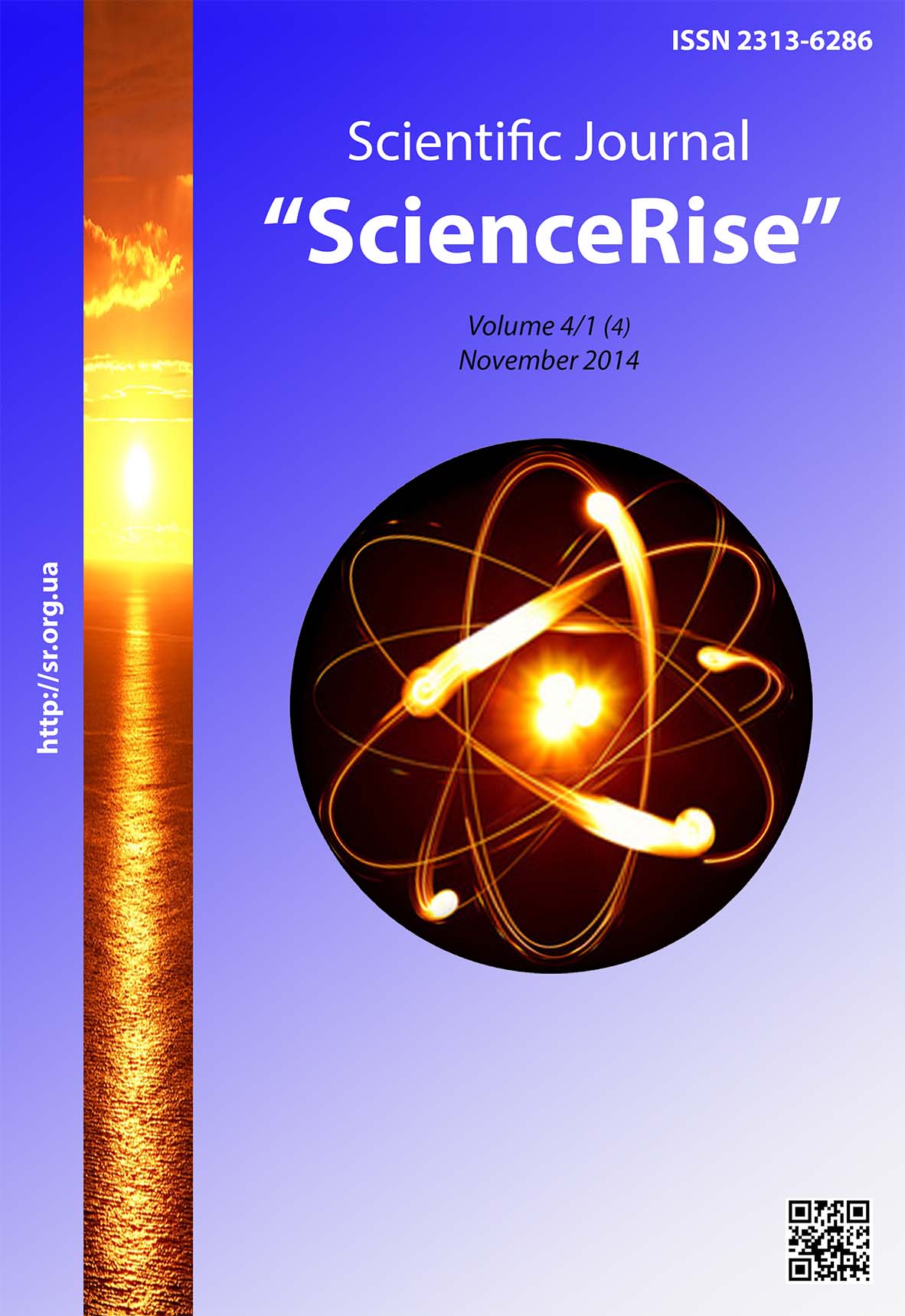Режимы двигательной активности для преподавателей высших учебных заведений в возрасте 50-65 лет
DOI:
https://doi.org/10.15587/2313-8416.2014.28404Ключевые слова:
двигательная активность, физическая нагрузка, преподаватели 50–65 летАннотация
Цель работы – обоснование рациональных режимов двигательной активности для преподавателей в возрасте 50–65 лет с риском развития сердечно-сосудистых заболеваний. Представлены рациональные режимы двигательной активности для преподавателей в возрасте 50–65 лет в зависимости от величины физической нагрузки, основанные на модельных характеристиках физического состояния их организма с различной степенью риска развития сердечно-сосудистых заболеваний, а также сенсорный способ прогнозирования признаков неадекватности физических упражнений.
Библиографические ссылки
1. Holovatch, I. (2010). Analysis of approaches to the definition of “eco-tourism”. Slobozhanskyi scientific sports newspaper, 12–15.
2. Druz, V. A., Pugach, J. I., Pyatysotskaya, S. S. (2010). Medical and biological bases of control of over the physical development of the population. Slobozhanskyi scientific sports newspaper: scientific and theoretical journal. Kharkiv: HDAFK, 3, 115–119.
3. Olijnyk, N. A., Zaitzev, V. P., Bondarenko, T. V. (2007). Modern human problems in the algorithm of health. Slobozhanskyi scientific sports newspaper: scientific and theoretical journal. Kharkiv : HDAFK, 12, 340–344.
4. Gerasymchuk, A. A. (2008). Importance of physical education in shaping a harmoniously developed personality. Materials of the conference “ Information of modern Ukraine ”. Donets’k, 187–192.
5. Zavydivska, N. N., Opolonets, I. V. (2010). Socialization in sport and recreation education. Pedagogy , psychology, medical-biologivcal problems of physical education and sport, 12, 48–51.
6. Evgrafov, I. E. (2008). Optimazation of physical activity of employees of enterprises. Educational and psychological, medical-biological problems of physical culture and sports, 12 (7), 20–26.
7. Kolesnik, Y. A. (2009). Using of physical training to improve emotional state and increase efficiency. Pedagogy, psychology, medical-biological problems of physical education and sport, 5, 124–128.
8. Golubeva, G. N. (2007).The contest of the walking activity depending on the level and form of organization. Pedagogy, psychology and medical-biological problems of physical training and sports, 1 (2), 12–18.
9. Romanenko, J. M., Lyannoy, Y. O. (2010). Quality of life as a modern problem of rehabilitology . Slobozhanskyi scientific sports newspaper: scientific and theoretical journal. Kharkiv: HDAFK, 4, 91–95.
10. Arhanhorodskyi, Z. S., Vostroknutov, L. O., Eremenko, V. V. (2010). Physical education as a part of a healthy lifestyle. Slobozhanskyi scientific sports newspaper, 1, 173–176.
11. Sheiko, L. V. (2010). Features of choice of health reasons swimming men 50-60 years old in the classrooms in groups of health. Slobozhanskyi scientific sports newspaper: theoretical scientific journal. Kharkiv: HDAFK, 3, 26–30.
12. Bemben, M. G., Clary, S. R., Barnes, C., Bemben, D. A., & Knehans, A. W. (2006). Effects of ballates, step aerobics, and walking on balance in women aged 50-75 years. Sports Sci. Med., 38, 390–399. doi: 10.1249/00005768-200605001-01871
13. Ivashchenko, L. J., Blagyj, A. D., Usachev, Y. A. (2008). Programming classes ofhealthy fitness. Scientific world, 197.
14. Vretelnyk, E. N., Kozupіtsa, G. S. (2000). Physiological assessment of changes in cardio vascular system during adaptation to physical activity of different sex and age. Actual problems of human knowledge in the field of educational activities, 19–21.
15. Kiseleva, E. A., Kantserova, D. R. (2007). Scientific substantiation of the author’s sports and recreation programs for individuals with variations in health, 1 (2), 1–16.
Загрузки
Опубликован
Выпуск
Раздел
Лицензия
Copyright (c) 2014 Сергей Любомирович Попель, Aлексей Владимирович Федорюк

Это произведение доступно по лицензии Creative Commons «Attribution» («Атрибуция») 4.0 Всемирная.
Наше издание использует положения об авторских правах Creative Commons CC BY для журналов открытого доступа.
Авторы, которые публикуются в этом журнале, соглашаются со следующими условиями:
1. Авторы оставляют за собой право на авторство своей работы и передают журналу право первой публикации этой работы на условиях лицензии Creative Commons CC BY, которая позволяет другим лицам свободно распространять опубликованную работу с обязательной ссылкой на авторов оригинальной работы и первую публикацию работы в этом журнале.
2. Авторы имеют право заключать самостоятельные дополнительные соглашения, которые касаются неэксклюзивного распространения работы в том виде, в котором она была опубликована этим журналом (например, размещать работу в электронном хранилище учреждения или публиковать в составе монографии), при условии сохранения ссылки на первую публикацию работы в этом журнале .

